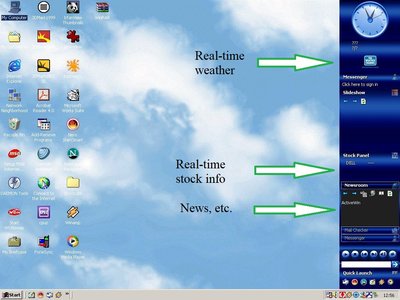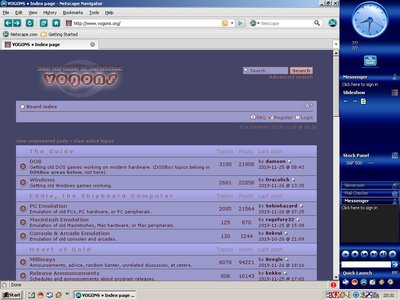First post, by khyypio
- Rank
- Member
I created this post because I couldn´t find another one due to this topics quite specific nature. Also, I didn´t want to derail threads that would be only somewhat about the same topic.
So, I have this modest ambition to get wireless networking for my Win98SE machine, by sharing a connection with my modern Win10 computer, which is hooked up to a router. The point is NOT to use it for ANY modern day internet activities such as streaming, banking, Facebook, or even checking e-mail, anything that a retro build can´t handle. Also, goes without saying that all activity containing personal or otherwise sentive information is off the table.
The idea is to use the connection for:
- light webpages that a Windows 98 machine can handle
- downloading patches and apps
- Messenger, AIM and other chat platforms
- to get information flowing on my desktop sidebar:
- etc. well, you´re smart folks, you get the idea: pointless but light and harmless fun!
I was hoping that in time this would evolve into a small community project, SAFETY as its number one priority! The thing is, though, I don´t know what the hell I´m doing. I told my plans to a friend of mine and he said that this could predispose my modern computer, because my retro pc could be used as some sort of a "back port" or something. I hope everybody interested would share their ideas, and those with experience would share a little bit of their wisdom.
wrote:I see no problem. Modern OS security is specifically designed to protect the PC even if other PCs in the network are compromised. Not that I think your Win98 PC will be; most modern malware probably can't even run on it.
For starters, the main questions are:
- How can I create this connection without compromising safety?
- What precautions are recommended for retro PCs?
wrote:As far as Wifi in Win98 SE goes, there isn't much to say, except that there is no generic Wifi management utility like there is on WinXP and later. Whatever card you use, you need to make sure it has Win9x drivers and then use the manufacturer's utility.
Ralink RT61 is recommended as it has WPA2 support for Win9x:
https://cloakedthargoid.wordpress.com/win9x-wpa2/
For WiFi card I was thinking SafeCom SWLPR-5410. My modern computer is connected to a ASUS DSL-N16 router with a wire.
USB WiFi:
Trendnet TEW-424UB
Rosewill RNX-G1
WiFi PCI cards:
Rosewill RNX-G300LX
SafeCom SWLPR-5410
Ethernet cards:
D-Link DGE-528T
3COM 3C905C
Latest browsers supporting Windows 98:
Netscape Navigator 9.0.0.6
Opera 9.64
Firefox 2.0.0.20
Internet Explorer 6

